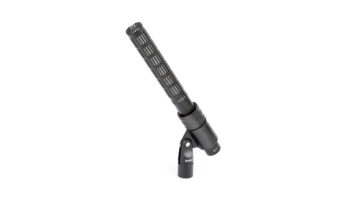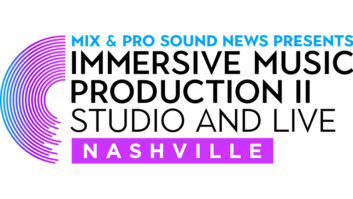“If you build it, they will come” is the stuff of Hollywood movies, and that adage applies to the art and science of music festivals as well—most of the time.
Experts, including promoters of both large and small events, booking agents, ticket sellers, analysts and economists, report that festivals in 2017 remain healthy, giving attendees a bigger bang for the buck to see an array of favorite acts and get a taste of new artists with whom they’re not familiar. “The convenience and cost savings of being able to see many of your favorite artists perform over a couple of days is leading to higher festival attendance,” William Mellor, vice president and general manager of Austin, TX-based Angelou Economics, which recently completed studies for festivals including Austin City Limits (Austin), Lollapalooza (Chicago), BottleRock (Napa Valley), and Governors Ball (NYC).
Balanced artist lineups cutting across a broad spectrum of genres, amenities such as nearby bathrooms, word-of-mouth critiques about the overall experience from attendees, not to mention sold-out venues, are all factors as to whether a festival is deemed a success.
Despite a few headline-grabbing cancellations this year, such as Karoondinha in central Pennsylvania or April’s Fyre debacle in the Bahamas, such first-time festival failures doesn’t taint the category as a whole, concur the experts, who pin the flops on case-specific malfeasance and well-meaning rookie mistakes.
“Every year, there are a few festivals that sadly get cancelled due to lack of ticket sales and leave an unfortunate mark,” comments Jordan Burger, an agent for Nashville, TN-based Madison House, which curates and operates the Electric Forest Festival, which is eight days over two weekends in Rothbury, MI. “The failures of Fyre and others are isolated incidents,” comments says Mellor. “They have not—and likely will not—make a broader impact on the music festival industry overall.”
While Fyre in particular was aimed at social media-focused Millennials, they are hardly the only demographic going to festivals these days, and older festival-goers are just as desirable for promoters. In fact, younger Baby Boomers spend close to what their Millennial children are spending on live experiences ($640 a year vs. $803) and attend more live events now than they did 10 years ago, according to research from the ticketing company Eventbrite. That may well be because often times, festivals these days are not just about music, aiming to broaden their appeal by offering experiential programming running the gamut from comedy, film, yoga, food and wine, and the gamut of lifestyle choices and political and social issue interests.
“Artists today aren’t shying away from the political spotlight in our current environment and could once again work to affect positive change through music,” points out Biasha Mitchell, head of music business strategy and solutions for San Francisco-based ticket-seller Eventbrite.
Mitchell cites as examples Alicia Keys, Madonna and Janelle Monáe performing at the Women’s March on Washington in January, and North Carolina’s Moogfest introducing a “protest stage” in opposition to North Carolina’s House Bill 2 (the “bathroom bill”) at this year’s edition. Eventbrite research recently found 80 percent of consumers are more likely to attend a music event that features artists who are affecting positive change through their music and 81 percent attend to engage with a like-minded community. “The collective experience at events can quickly become collective action, and Millennials are embracing festivals in particular to make sense of the world around them,” Mitchell says. Aiming to help individuals help their “true north” and cultivate their best selves, Wanderlust launched in 2009 as a summer indie music/yoga/wellness festival in Squaw Valley, CA. It has since spread the franchise year-round to 8 places throughout the U.S., Canada, and Australia and New Zealand. Similarly, yogawear line lululemon sponsors the SeaWheeze Sunset Festival in Vancouver, which includes yoga, beer and dancing following a race. Tour de Fat, which was originally created by Fat Tire as a simple beer festival, is now a traveling philanthropic beer, music and bike festival.
Broadening the appeal beyond music opens up new revenue streams, in addition to sponsorships. “Sponsorships certainly help keep the lights on for both venues and bands,” Burger notes, adding sponsorships often help poorly selling festivals or concerts and artists with large touring expenses stay afloat. “They’re just an increasingly necessary part of the business.”
Aiding the continued rise of the festival market is the fact that more and more communities are welcoming them as a tool for economic development, Mellor notes. The economic benefit to the city of Austin of all SXSW-related activities, such as the music and film festival and interactive conferences, associated media buys and visitor lodging in 2016 totaled $325.3 million, reported Greyhill Advisors, also of Austin. The 2017 edition of the SXSW music festival showcased 2,085 artists from 63 countries over six days in March performed on 104 stages, one more stage than in 2016.
Clearly, commerce was a consideration for LiveNation last year when it bought a controlling 51 percent interest in Bonnaroo, which just wrapped its 16th edition. “We had a good year,” reports Jeff Cuellar, vice president of strategic partnerships for AC Entertainment, who was one of the founding partners of Bonnaroo and has been with the festival since its inception.
In June, 65,000-plus unique visitors made their way to the festival’s site—Manchester, TN’s Great Stage Park campgrounds—which received $10 million in physical improvements, including permanent bathrooms and its own water supply.
“[Bathrooms] are not necessarily things you advertise,” Cuellar says. “It doesn’t sell a ticket, but helps the overall experience and the word-of-mouth gets around.”

Bonnaroo’s 2017 lineup was reinvigorated, with younger acts like Cage The Elephant, which Rolling Stone raved about as “festival killers.”
One thing that does get advertised is the line-up, and with good reason. Established headliners continue to take a nice payday at a big festival as another date on a tour, while up-and-comers don’t mind jumping on an opportunity to expose their music to new audiences. Finding the right mix of legacy acts and young upstarts is no simple task, however. Bonnaroo this year saw a 40 percent uptick in ticket sales over last year; the 2016 edition was the least-attended Bonnaroo ever, selling only 45,537 tickets—28,000 less than 2015, representing a drop of $9.07 million in sales, and 45 percent less than the festival’s peak year, 2011. Regional critics blamed the 2016 drop on what they deemed to be a lackluster artist lineup headed by Pearl Jam and Dead & Co.
Nonetheless, legacy acts are still strong draws for the festival, as the 2017 Bonnaroo proved. Helping power its strong ticket sales rebound was U2, which is touring behind the 30th anniversary of its breakthrough album The Joshua Tree, headlined Bonnaroo in June, along with the Red Hot Chili Peppers, whose popularity arguably peaked in the 1990s. Nonetheless, the performer roster was stacked full of newer acts, too, including The Weeknd, Chance the Rapper, Major Lazer, Lorde and The XX, appealing to a younger demographic. “They’re the most likely to attend a camping music festival,” Cuellar notes.
Satisfying the tastes of a wide range of ages “is a complete balancing act” that aims to give the people what they want but also open new avenues of appreciation, he adds. To wit, Cuellar overheard a concert-goer in her late teens telling a friend that she was glad she took her mother’s advice to check out U2, because it turned out be one of her festival highlights.
“Bonnaroo’s goal was always to bring together a likeminded group of individuals that wants to experience amazing live music, and get away [regardless of whether] you’re a doctor, lawyer or student; it’s a chance to be you, just have a good time, enjoy yourself and disconnect a bit,” Cuellar says.
Genre-wise, EDM, R&B and pop acts seem to have an ever-stronger presence on festival lineups, observes Burger, who remembers when festivals once catered primarily to alternative rock and jam bands. “Folk festivals seem to stay consistently successful, yet under-the-radar as well,” he adds.
Avid festival attendee Michaela Marchardt, who covers them for a Tennessee publication called Blank Newspaper, also found this year’s Bonnaroo “a lot more EDM and hip hop than usual. It’s not your hippie festival anymore.” The switch likely resulted in ticket sales from people who had never attended before. “That’s just what kids these days want to see,” Marchardt notes, adding that a younger crowd doesn’t mind camping in the Tennessee summer heat for four days.
“On the other hand, you have these new festivals like Desert Trip, Pilgrimage and Arroyo Seco that pop up, targeting a more mature audience and making a family-friendly atmosphere their priority,” she observes. “These festivals tend to end earlier every night and people don’t have to camp there,” she adds.
Marchardt’s observation is borne out by recent MusicWatch Inc. data, which found the average Millennial spends $118 at a festival, whereas the younger Boomer spends $121 and the older Boomers’ spend goes down to $74.
“The demand for live experiences is happening across the generational board,” notes Mitchell. “Decades before Millennials were heading to Wanderlust or Coachella, the Boomers were making history at Woodstock. They are now retired, their kids are grown and out of the house, and they are looking for new ways to connect with them.”
Amenities ranging from no bathroom lines to the usage of cashless, RFID wristband technology, help fans that spend hundreds of dollars for a multi-day pass at a large event enjoy themselves more.
Some of those technologies are in use at New York City’s Governor’s Ball, which had to cancel its third day in 2016 because of bad weather, but that was luckily not the case June 2-4 this year. “Attendance figures were up significantly,” Mellor points out. “Once you factor that, in addition to this year’s strong turnout, the economic impact is in stark contrast to last year. More people means more spending on food, hotels, bars, merchandise and many other types of expenditures.”
On a smaller scale, fans of specific genres, such as folk, blues, country and jazz, can relish their favorite musical category in a day or two at regional, genre-specific festivals. While events like bluegrass-oriented Merlefest in Wilkesboro, NC or the neo folk-tinged Clearwater Festival in Croton-On-Hudson, NY may draw fans to idyllic settings, focused festivals work in metropolitan areas, too. New York City’s Jazz at Lincoln Center (JLC) runs an annual three-day indoor event in April honoring composer Thelonious Monk, featuring musicians from around the world. The program spreads out among its three indoor venues.
“It’s a festival, but they’re separately ticketed events,” notes Jason Olaine, JLC director of programming and tours, adding that attendance for the Monk festival grows annually and they’re considering an all-access pass for next year. JLC also partners with Caramoor Center for Music and the Arts in upstate Katonah, NY for the Caramoor Jazz Festival, which held its 24th annual all-day event on July 15 with legendary jazz pianist McCoy Tyner as the headliner.
Mounting a successful music festival takes a perfect storm of good weather, enticing lineup, synergistic sponsorships, cash reserves, and competent management.
“A well-curated festival,” sums up Burger, “is like making the perfect mix tape—it’s all about the perfect blend. On the whole, the U.S. festival scene is more vital than ever, a year-round situation now, much like they’ve been hosting in Europe for years.”







